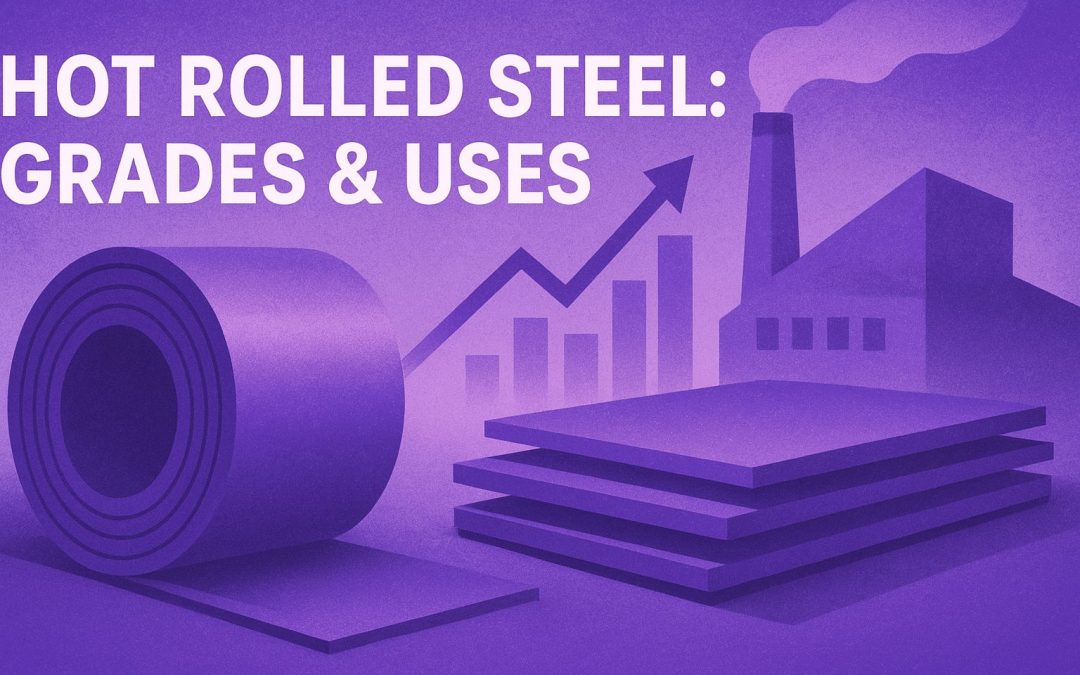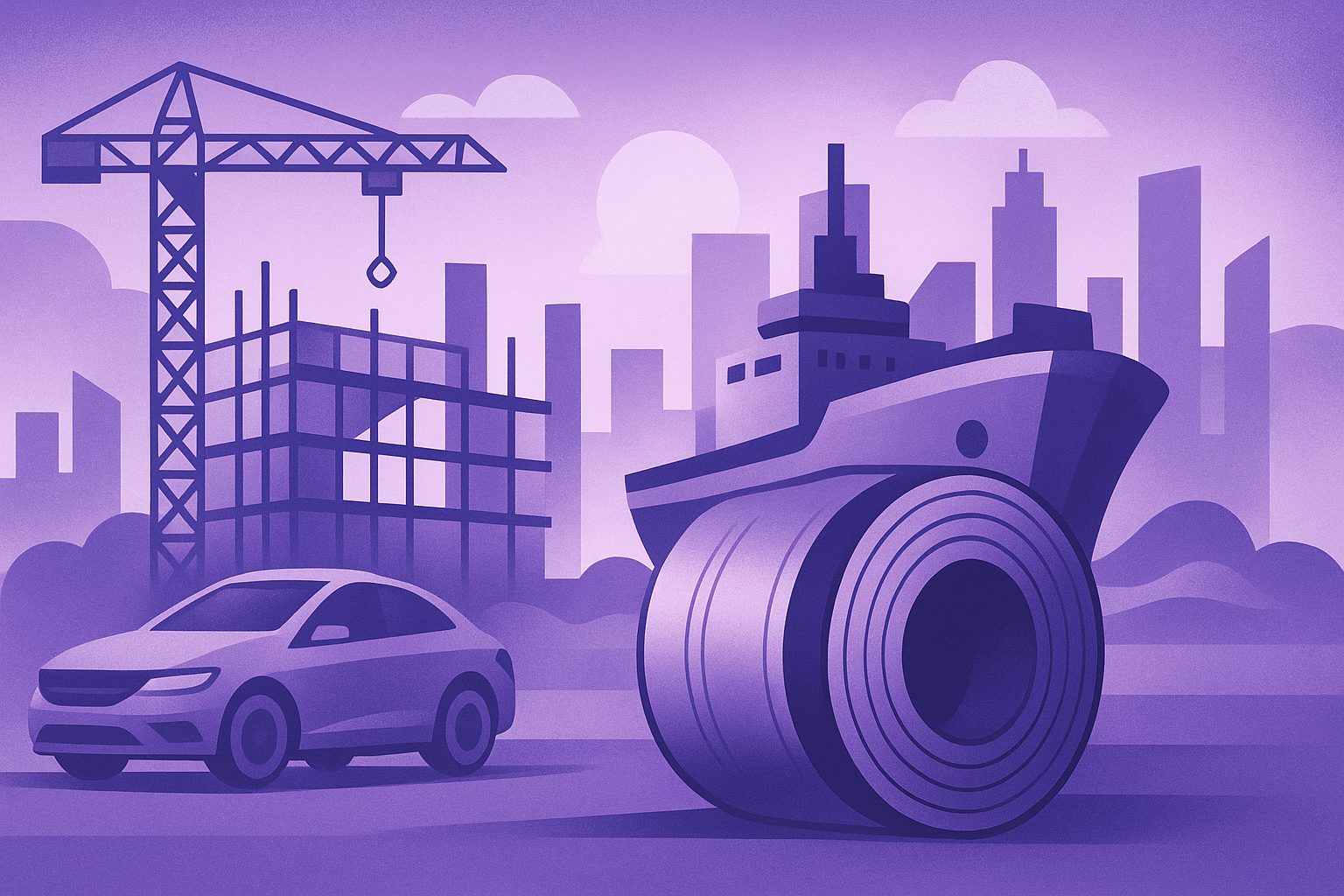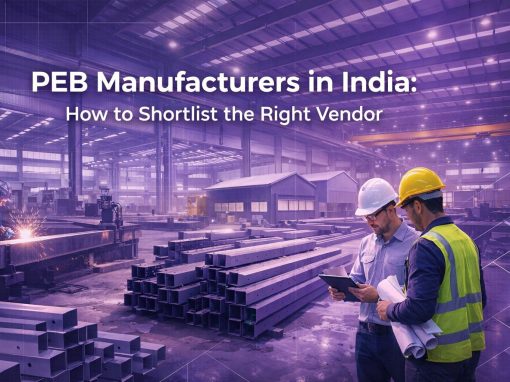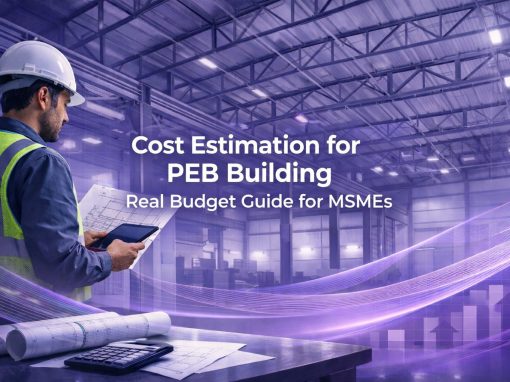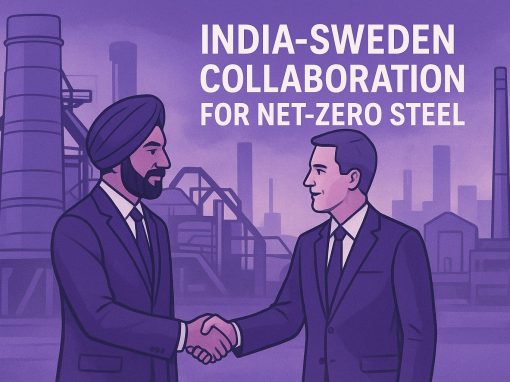Table of Contents
Hot rolled steel (HR) coils are a versatile and essential material used across various industries due to their strength, durability, and cost-effectiveness. In 2025, the HR coil market in India and globally is seeing growing demand for construction, automotive, and infrastructure projects. Understanding the trends in HR versus cold rolled (CR) steel, along with insights into sourcing and suppliers, helps businesses make informed procurement decisions.
Understanding Hot Rolled Steel Coils
Hot rolled steel coils are a type of steel product that undergoes a manufacturing process involving heating and rolling. The steel slabs are heated to a high temperature, usually above 1700° F which is above the re-crystallisation temperature for most steel products. It makes them malleable, and then passed through a series of rollers to shape them into the desired thickness and width. Once the steel is cooled, it is coiled for storage and transportation.
Types of HR Coils
| Type | Description | Typical Thickness/ Width/Gauge | Recommended Applications/Industry |
| Carbon Steel HR Coils | Most common HR coils, made from carbon steel; good balance of strength, ductility, and weldability. | Thickness: 1.2–25 mm, Width: 600–2000 mm, Gauge: 14–100. | Construction beams, structural frameworks, general metal fabrication. |
| Alloy Steel HR Coils | Contains alloying elements like manganese, silicon, or chromium for enhanced properties. | Thickness: 1.5–20 mm, Width: 900–1800 mm, Gauge: 16–90. | Automotive components, heavy machinery, industrial equipment. |
| Galvanised HR Coils | Coated with zinc layer for corrosion resistance. | Thickness: 0.3–6 mm, Width: 750–1250 mm, Gauge: 20–200. | Outdoor structures, roofing, pipelines, corrosion-sensitive applications. |
Popular Hot Rolled Steel Grades
Hot-rolled steel (HR) coils are available in various grades, each designed to meet specific mechanical, chemical, and industrial requirements. Selecting the right grade depends on the intended application, strength, and fabrication needs. Some of the most used hot-rolled steel grades include:
| Grade | Description | Typical Applications |
| A36 | One of the most popular HR steel grades, known for its excellent weldability, machinability, and mechanical properties. | Structural beams, construction frameworks, general fabrication. |
| C1010 & C1018 | Low-carbon steels offering high formability, machinability, and weldability. The main difference lies in carbon content, affecting strength and ductility. | Automotive panels, light machinery parts, metal fabrication. |
| A1011 | Widely used grade for automotive and general structural applications, offering a good balance of strength and flexibility. | Automobile bodies, building structures, metal fabrication. |
| C1026 | AISI-designated low-carbon steel with properties similar to A36 but slightly lower carbon content, enhancing formability. | Furniture, automotive components, structural parts. |
| 304 (Stainless HR) | Highly versatile stainless steel known for corrosion resistance, mouldability, and durability. Often used in hygienic or high-performance environments. | Food processing equipment, chemical plants, nuclear energy, medical devices, |
Note: Each grade may have international equivalents in ASTM, JIS, or EN standards. Selecting the right grade ensures structural integrity, durability, and cost-effectiveness in your project.
Applications of HR Coils
Hot rolled steel coils are used extensively across a wide range of industries due to their flexibility, strength, and cost-effectiveness. These key applications demonstrate their importance across both traditional and emerging sectors:
Construction: HR coils are ideal for structural beams, columns, and building frameworks in large infrastructure projects such as bridges, highways, and skyscrapers. Their strength and durability make them suitable for high-load applications.
Automotive Industry: Used in body panels, chassis, suspension components, and other car parts, HR steel provides the necessary strength and malleability to withstand stress while keeping costs reasonable.
Shipbuilding: HR steel coils are preferred for ship hulls and structural components, offering resilience in harsh marine environments.
Heavy Machinery: Industrial equipment, cranes, and earth-moving vehicles rely on HR steel for high durability and heavy-duty performance.
Pipelines and Energy Infrastructure: HR coils are used for oil and gas pipelines and energy projects, where they can endure high pressures and temperatures.
Renewable Energy: HR steel supports the fabrication of wind turbine towers, solar mounting frames, and other green energy structures requiring strong yet versatile materials.
Prefabricated Housing: HR coils are increasingly used in modular and prefabricated building components, providing structural stability and rapid assembly.
Cold Storage & Industrial Facilities: Coils are employed in building cold storage units, warehouses, and factories where corrosion resistance and long-term durability are crucial.
Agricultural & Railroad Equipment: HR steel is also used for machinery, rail tracks, and supporting infrastructure in farming and transport sectors.
Hot Rolled Coil Manufacturing Process
The hot rolling process involves heating and compressing a large, rectangular slab of metal called billet. It is then made to pass through a series of rotating rulers to achieve the desired dimensions. Finally, the rolled steel is wound into coiled rolls and left to cool.
It may be noted that steel shrinks slightly as it cools. As the rolled steel is cooled after processing, there is less control over its final shape. This makes hot rolled steel coil less suitable for precision applications and is often used where specific dimensions aren’t crucial. The hot rolled steel coil finds application mostly in railroad tracks and construction projects.
Hot rolled steel is identified by the following characteristics:
- A scaled surface due to cooling from extreme temperatures
- Rounded edges and corners due to shrinkage
- Minor distortions as opposed to perfectly squared angles
Also Read on: Aluminium Coil, Colour coated steel coil, Stainless steel coil.
HR vs. CR Steel Coils
Hot rolled (HR) and cold rolled (CR) steel coils differ significantly in their manufacturing processes, properties, and applications. While HR steel is produced at high temperatures, making it strong, malleable, and cost-effective, CR steel is processed at room temperature, resulting in superior surface finish and dimensional precision. Choosing between the two depends on the project requirements, budget, and desired material properties.
| Property | Hot Rolled (HR) Steel | Cold Rolled (CR) Steel |
| Surface Finish | Rough, scaled surface, less visually appealing. | Smooth, shiny surface, ideal for aesthetic applications. |
| Dimensional Precision | Lower precision due to shrinkage and cooling. | High precision, consistent thickness and dimensions. |
| Cost | Lower, less processing required. | Higher, additional processing increases cost. |
| Strength & Ductility | Good tensile strength and ductility, suitable for heavy-duty applications. | Higher tensile strength, slightly less ductile. |
| Applications | Structural beams, construction, pipelines, heavy machinery. | Appliances, automotive panels, precision tools, furniture. |
| Processing Time | Faster, fewer steps. | Slower, requires extra rolling and finishing steps. |
| Edge Quality | Rounded edges, minor distortions. | Sharp, clean edges, minimal distortion. |
Key takeaway: HR steel is best suited for projects prioritising cost-effectiveness and structural strength, while CR steel is ideal for applications requiring precision, aesthetics, and a smooth finish.
Market Trends & Sustainability
- In 2025, the demand for hot-rolled (HR) steel coils in India is growing due to infrastructure expansion, automotive production, and industrial development.
- Green steel initiatives and low-carbon manufacturing processes are increasingly adopted to reduce environmental impact and improve energy efficiency.
- Recycled content in HR steel production is rising, contributing to sustainability while maintaining mechanical strength and durability.
- Buyers are prioritising suppliers who offer environmentally responsible steel with verified quality and compliance with international standards.
Estimated Prices of Hot Rolled Steel Coils in Major Indian Cities
Please note that steel prices fluctuate frequently due to market conditions, government policies, and other factors. The prices listed below are indicative and may not reflect the exact prices at the time you access this information. It’s always recommended to check with multiple suppliers or consult online platforms for the most current and accurate pricing.
| City | Approximate Price per Ton (₹) |
| Delhi | ₹ 45,000 – ₹ 50,000 |
| Mumbai | ₹ 43,000 – ₹ 48,000 |
| Kolkata | ₹ 44,000 – ₹ 49,000 |
| Chennai | ₹ 46,000 – ₹ 51,000 |
| Bengaluru | ₹ 47,000 – ₹ 52,000 |
| Hyderabad | ₹ 45,000 – ₹ 50,000 |
| Ahmedabad | ₹ 44,000 – ₹ 49,000 |
| Jaipur | ₹ 45,000 – ₹ 50,000 |
| Lucknow | ₹ 46,000 – ₹ 51,000 |
| Pune | ₹ 44,000 – ₹ 49,000 |
Conclusion
Hot rolled steel coils offer a balance of strength, durability, and cost-effectiveness, making them a valuable material for a wide range of applications in India. While they may not have the same level of surface finish or dimensional accuracy as cold rolled steel, HR coils excel in mechanical properties such as tensile strength, yield strength, ductility, and toughness. This makes them ideal for structural components, automotive parts, manufacturing processes, and infrastructure projects. By understanding the different types of HR coils, their applications, and the factors influencing the market, MSMEs can effectively source and utilise this essential material to meet their specific needs and contribute to the growth of the Indian steel industry.
Looking to procure steel?
Tata nexarc helps manufacturers, builders and MSMEs source certified steel products, compare prices, and choose the right grade as per IS codes—with complete traceability and procurement confidence.
